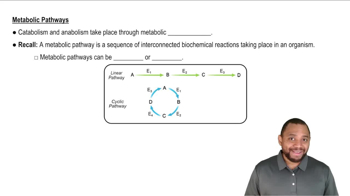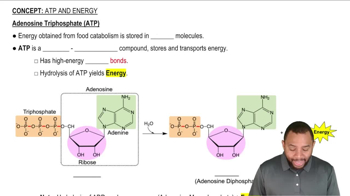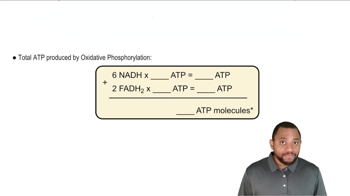Here are the essential concepts you must grasp in order to answer the question correctly.
Metabolism
Metabolism refers to the set of life-sustaining chemical reactions in organisms. It is divided into two main categories: catabolism, which breaks down molecules to produce energy, and anabolism, which uses energy to construct components of cells. Understanding metabolism is crucial for identifying how different biochemical reactions contribute to energy production and utilization in living organisms.
Recommended video:
Metabolic Pathways Concept 2
NADH and ATP
NADH (Nicotinamide adenine dinucleotide) is a key electron carrier in cellular respiration, playing a vital role in the transfer of electrons during metabolic reactions. ATP (Adenosine triphosphate) is the primary energy currency of the cell, providing energy for various cellular processes. The oxidation of NADH is coupled with ATP synthesis, highlighting the interconnectedness of electron transport and energy production.
Recommended video:
Adenosine Triphosphate (ATP) Concept 2
Oxidative Phosphorylation
Oxidative phosphorylation is the final stage of cellular respiration, occurring in the mitochondria. It involves the transfer of electrons through the electron transport chain, leading to the pumping of protons across the mitochondrial membrane and creating a proton gradient. This gradient drives ATP synthesis via ATP synthase, making it essential for understanding how energy is produced in cells.
Recommended video:
Oxidative Phosphorylation Concept 2
 Verified step by step guidance
Verified step by step guidance Verified video answer for a similar problem:
Verified video answer for a similar problem:



 1:23m
1:23m